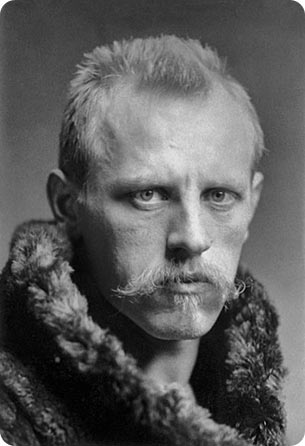Fridtjof Nansen was just 21 when he first sailed into the frigid waters of the Atlantic and Arctic oceans. The young zoologist, who was born in Norway in 1861, joined the crew of a seal-hunting ship. In addition to catching seals, he recorded details about the oceans, the weather, and marine life. And he developed a love for the sea, the ice, and Arctic adventures.
 Norwegian scientist and diplomat Fridtjof Nansen. Credit: George Grantham Bain Collection (Library of Congress)
Norwegian scientist and diplomat Fridtjof Nansen. Credit: George Grantham Bain Collection (Library of Congress)Over the next three decades, Nansen became one of the world’s leading experts on the Arctic, and he developed a device for sampling deep ocean waters that’s still in use today. But he’s best known for a single expedition.
In 1881, debris from an American ship that had disappeared near Siberia washed up in Greenland -- presumably carried by uncharted currents. Nansen thought the currents might pass over the north pole.
So in 1893, he and a dozen other men set out in the Fram, a tough little ship specially designed to survive the ice. They sailed to the spot where the American ship disappeared, then waited for winter.
When ice entrapped the ship, though, the progress toward the pole was too slow for Nansen’s liking. So he and a companion struck out for the pole via dogsled. They couldn’t make it, though, so they headed toward an island near Norway. They made it, and were reunited with the Fram after it escaped the ice. The ship never got near the pole, though.
Nansen’s account of the expedition made him an international star. And the scientific findings kept him busy for years -- telling the world about the icy realm of the far north.

